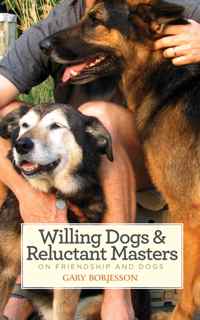Marlantes’ heart-rending description of maddened elephants screaming after being bombed dramatically presses the question: how can we overcome the inurement to violence that prevents us from feeling compassion? As he puts it, “most of us have already been raised with this ‘short-circuit training’ that enables us to override the more complex neurological wiring of compassion with the simple and direct short circuit of trivial concerns and immediate needs and wants.”
Since the default wiring for most of us is the short circuit, it’s not clear what he means by “override” here. Compassion is a natural capacity, but it’s not developed without nurture and training. Alas, the psychologist Alice Miller is probably right in her estimate that only about 5% of children have had the rare good fortune to have parents capable of showing and modeling compassion. The rest of us learn later it later, if ever. Yet, as most spiritual traditions attest—Buddhism with especially deep insight and sophistication—cultivating compassion is an essential step on the path to spiritual awakening.
Which brings me to Marlantes’ two methods for overcoming the “short-circuiting of compassion.” In this post, we’ll hear about the “physical method.” In the next, we’ll hear about the “ritualistic method.”
The physical method requires that we make a conscious attempt to use other senses besides the visual whenever we are faced with making decisions that could result in killing or carnage. Our nonvisual senses haven’t been dulled like our visual ones….Walk through a burned-out village where the dogs haven’t been fed and you hear them eating the dead. If this doesn’t snap through your conditioning, then smell human meat rotting. Listen to the wailing of the orphaned child and go mad with it because you can’t get it out of your ears until you either walk away or do away with the child. Pick up chunks of body and feel the true meaning of dead weight. These senses aren’t filtered and dulled by visual media. These channels are much more directly open to the heart. This is another reason why computer-game warfare has no natural checks upon its violence.
Imagine, as Marlantes recommends, that each member of Congress were required to undergo a similar ritual in a combat zone. (I’m reminded of the Buddhist practice of meditating at charnel grounds, to teach the impermanence and thus preciousness of life and to encourage compassion.)
The dogs don’t come off terribly well in this scene, but versatility and opportunism are part of their genius, as well as part of ours. Speaking of dogs, I’m reminded of an experience that illustrates his point. Over the years I’ve heard (and read) many stories of injustice and cruelty to dogs, but for a long time I never witnessed actual cruelty. Then about eight years ago I was with my dog Aktis at a Schutzhund club training session, on the sidelines as others worked with their dogs. I watched as a tall wiry guy, probably 25 or so, led his beautiful German shepherd bitch onto the field for a round of obedience work. It was immediately obvious that things were amiss. The guy’s body language was all wrong: agitated, uptight, irritable; the dog was visibly jittery and anxious beside him. It was painful to watch, and worse was on the way.
Many owners have not had the experience this guy was having, of a dog too eager to obey. She was so anxious to please, in fact, that she kept anticipating him, and making mistakes as a result. The conversation on the sidelines quieted as we all focused on the unfolding drama. The guy was getting angry and using excessive force to correct her. This made the dog even more anxious and unmanageable. Suddenly the guy lost all control and savagely kicked her in the flank several times, right in front of at least 10 or 15 of us, who looked on shocked and horrified. The judge on the field immediately shouted at him to stop, which he did, now instantly ashamed in addition to being furious.
I’d read about worse, but seeing this violence firsthand, and hearing it as the dog cried and the man cursed, opened my heart completely to the cruelty of it. I was horrified to imagine what life was like for a dog living with such a man, and at the same time I felt the sting of recognition, knowing from the inside what it was like to get unreasonably angry with my own dogs and how it short-circuited my compassion.
At the time I didn’t give much thought to the man’s evident suffering, not just because he was the villain in this terrible drama, but also because I’ve always found it harder to feel compassion for human beings than for other animals. The elephants and dogs are innocent in ways that none of us is, which makes abusing them more cruel. No doubt this is why, as a playright friend told me, one of his drama teachers said there is no better way to make a character a villain than to have him or her kill a dog. Even baby killers aren’t as reviled by an audience.
Looking back on it, were my own compassion not short-circuited, I know my heart would have gone out to this suffering young man as much as it did to his poor beaten dog. All that anger and misery, the lack of self-control and self-respect, the inability to feel compassion for a dog that in some twisted sense he loved. The whole experience had the effect Marlantes expects it would have: it kindled in me a genuine and lasting compassion for the suffering we bring on our animals, and ourselves in the process. Such vivid, direct experiences go a long way toward changing the wiring.

